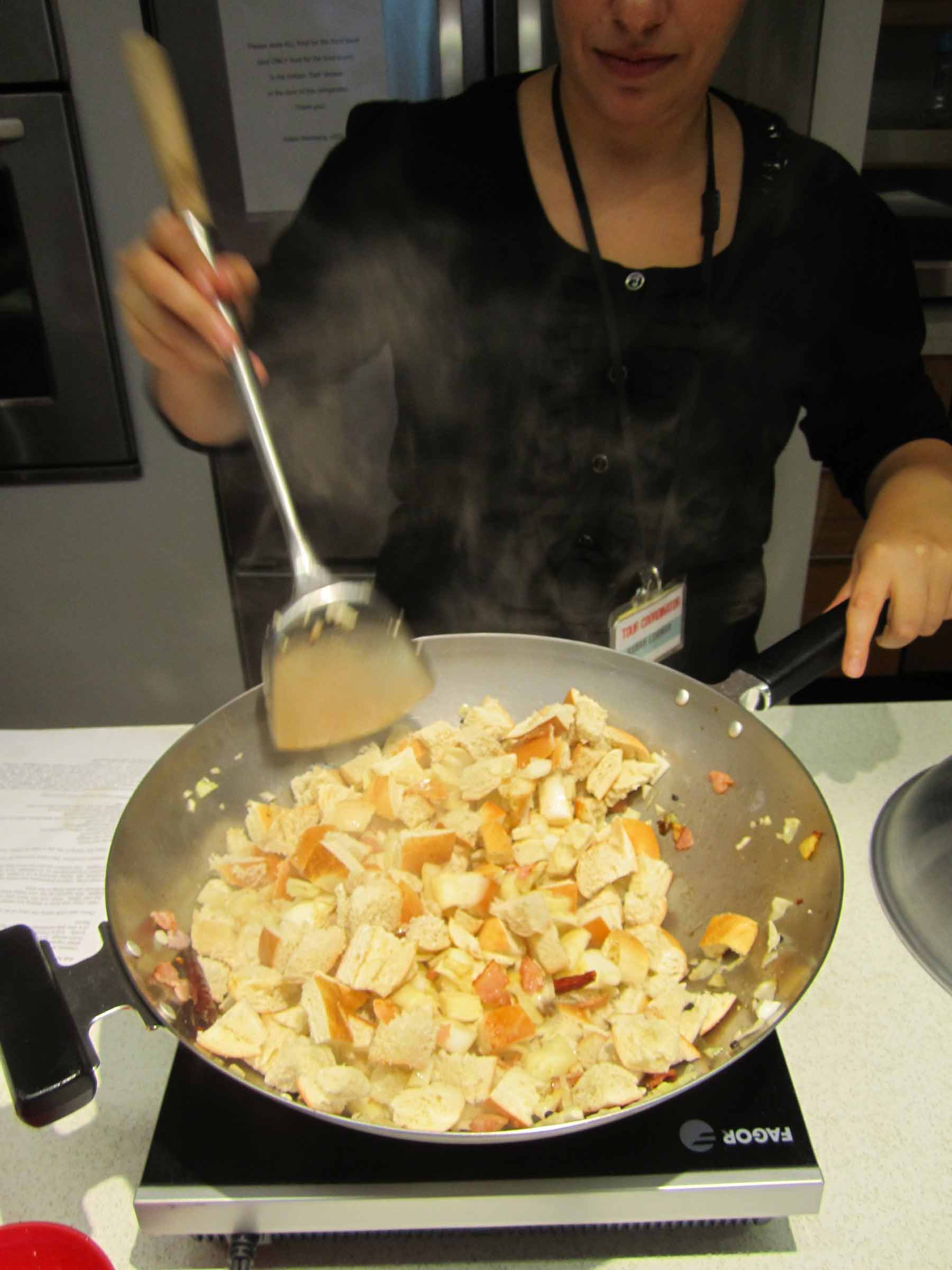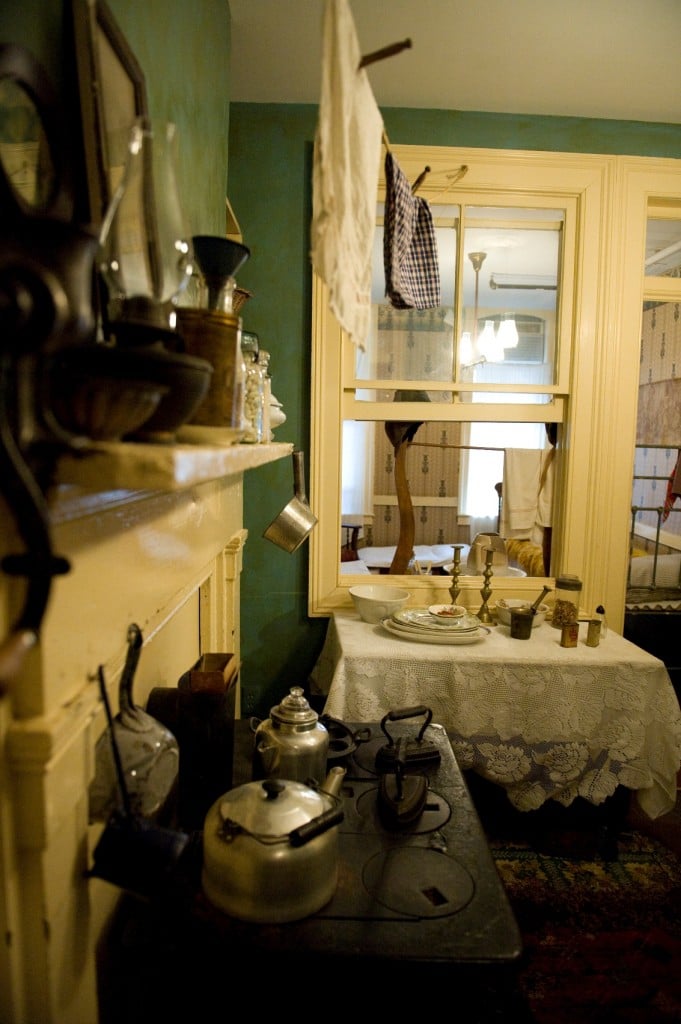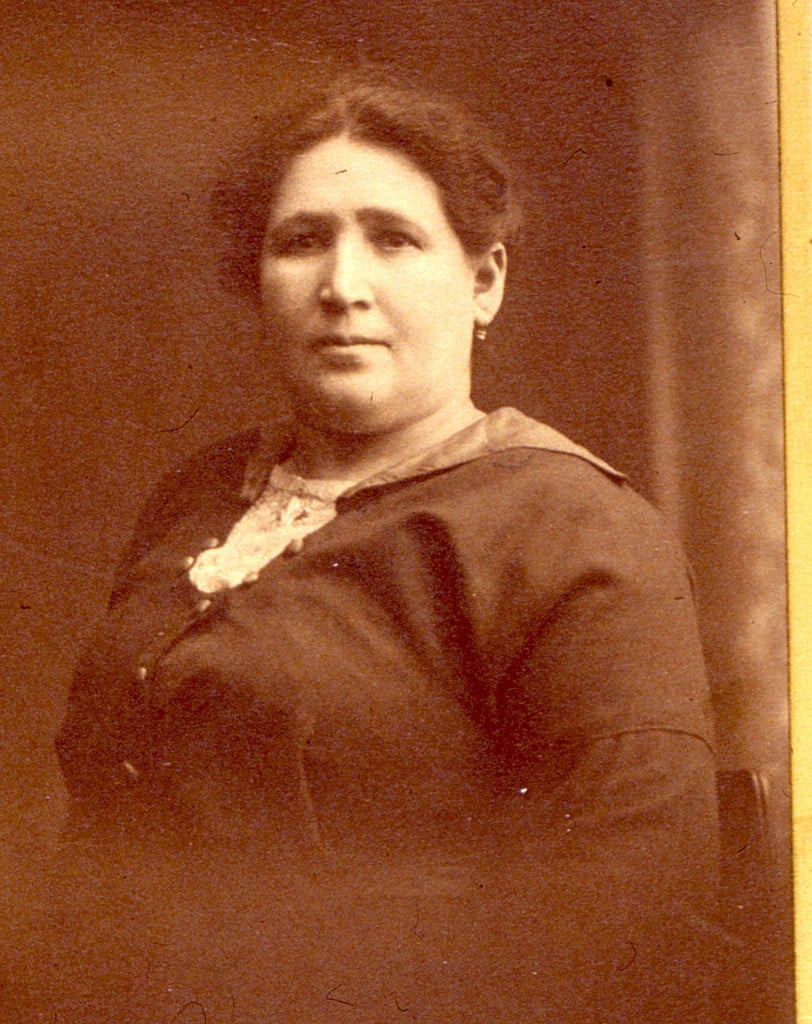Blog Archive
Introducing Tenement Kitchens
Tours of 97 Orchard Street recreate immigrant life in the nineteenth and twentieth centuries and explore many of the health, labor, and cultural issues that faced these immigrant families. But there are many topics that we don’t always have time to delve into in a one-hour tour, such as the types of meals these families ate together.
Several months ago, Sarah Lohman, my Museum colleague and a food historian and blogger, developed a tour called Tenement Kitchens. I’ve enjoyed working with Sarah to bring this new program to our visitors.
Offered only in the evenings, the Tenement Kitchens tour explores the foodways of immigrant families living in 97 Orchard Street. Historically, for many Lower East Side women, feeding the family was a daily struggle. Scraping together what money was left after paying rent, tenement women scoured the markets in search of the best ingredients, while sharpening their wits haggling over prices. They made dinner in apartments without running water, electricity, or refrigeration. Their meals show us how they preserved their heritage while adapting to a new land. On this tour, you’ll learn about the central role that the kitchen played in the home, and you’ll get to see, smell, and even taste the foods of the tenements.
I asked Sarah a few questions about the new tour:
What inspired you to research and write the content for Tenement Kitchens?
I saw food extraordinaire Jane Ziegelman give a food-based tour, and I loved it. I loved thinking about the families that are so familiar to me in a new way—and food is such a wonderful way to make the stories personal. We can all relate to food. About a year later, the Important People at the Museum asked if I would like to write a tour that would run regularly—like the successful “Exploring 97 Orchard Street” architecture tour—and I jumped at the chance.
What kind of primary resources did you turn to when researching? Which ones did you find the most helpful and why?
Cookbooks! Cookbooks are an extremely underutilized primary resource. The recipes give you a sense of what different families might have been cooking, but there’s often so much more material in a cookbook. When researching the Gumpertz family, I looked in Jewish Cookery, the first Jewish cookbook published in America in 1871; there’s a section in the back with selected menus. On Sunday, the author says the best meal should be served because that’s the day the husbands are home. For a Jewish family, the husband would traditionally be home on Saturday from work, and Friday night is when the best meal would be served in observation of the Sabbath. But in America, the work week included Saturday, and only allowed for the Christian Sabbath, Sunday. So the cookbook shows signs of adaptation in America: the wife and children would keep Shabbat, but the husband was working; the best meal was moved to Sunday to accommodate.
I also read The Oriental Cookbook when I was researching the Confino family. It was published in 1913 in New York to introduce American cooks to “Oriental,” or Middle Eastern and Mediterranean cooking. In the back of the book, there is a list of hard-to-find ingredients, like Kashkaval, a sheep’s milk cheese, and Kadayif, a shredded pastry dough. The book recommends replacements for both of those items: Italian Romano cheese and Shredded Wheat cereal, a new product in the 1900s. This gave me a sense of what the Confinos, a family from Macedonia, would have used as replacements if they couldn’t find the food they loved from home in America. It’s all about adaptation.
What new ideas and questions do you want visitors to walk away with after taking the Tenement Kitchens tour?
I would like them to think of their own dinner tables as a place where heritage is preserved, but also as a place where we, as Americans, often first accept new immigrant cultures. No American is afraid of Italian food like lasagna today, but 70 years ago it was considered un-American. Food is often the first olive branch of acceptance when it comes to the immigrant experience.
I’d also like visitors to think about how we adapt. Not just how new immigrants adapted when they first came here, but also how their finds have changed and adapted to American tastes and ingredients. How we adapted recipes in our own kitchen to our own tastes. This process is how uniquely American dishes are created.
If you had the opportunity to time travel and sit down for dinner with one of the families featured on the tour, who would it be and why?
I’d like a meal with Fanny Rogarshevsky. She looks like she can cook.
—Posted by Alana Rosen
There is a Tenement Kitchens program tonight, November 5, at 6:30pm. The tour lasts 75 minutes. For tickets, please call 1-877-97-LESTM.


